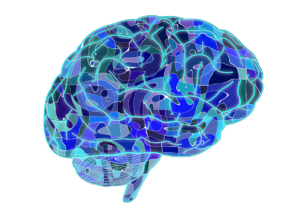Primary Progressive Aphasia
What is primary progressive aphasia?
Primary progressive aphasia affects one’s ability to communicate by making it difficult to express thoughts, understand words, and find words. It is a neurological syndrome that can eventually cause people to lose the ability to speak and write altogether. It comes in three types: semantic variant, logopenic variant, and nonfluent-agrammatic variant.
Symptoms progress gradually and typically show before the age of 65. It is a type of frontotemporal dementia, which is a group of conditions that tend to see the onset of symptoms in the later stages of life.
What are the symptoms of primary progressive aphasia?
Symptoms for this condition may vary, depending on where the damage to the brain occurs and which type of the condition one has. Each type presents its own symptoms.
Semantic variant primary progressive aphasia causes difficulty in understanding written and spoken language, specifically single words, trouble with understanding the meaning of words, and issues with naming objects.
Logopenic variant primary progressive aphasia has symptoms such as difficulty remembering words and word substitutions, frequent pauses in speech due to the inability to find words, and trouble with repeating things.
Nonfluent-agrammatic variant primary progressive aphasia has symptoms like poor grammar, trouble with complex sentences, and speaking problems like apraxia of speech.
Complications may also arise from this condition. The ability to speak, write, and understand language are eventually lost completely. Other mental skills, such as memory, may also be affected. Issues with movement are also common. As the disease continues to progress, depression, behavioral issues, social issues, and blunted emotions may also develop.
What causes primary progressive aphasia?
Certain sections of the brain atrophy, causing primary progressive aphasia. These sections are necessary for speech and language and are typically the frontal, temporal, or parietal lobes on the left side of the brain.
There are certain risk factors that heighten the chance of having primary progressive aphasia. These are learning disabilities and certain gene mutations.
How is primary progressive aphasia diagnosed?
Doctors will first review symptoms before conducting tests to confirm a diagnosis of primary progressive aphasia. Neurological examinations, speech-language evaluations, neuropsychological evaluations, brain scans, and blood tests may all be used to find a diagnosis.
What are the treatments for primary progressive aphasia?
There are no cures or medications to treat this condition. Speech and language therapy is a way to slow the progression of symptoms.
Where can I find out more about primary progressive aphasia?
Primary Progressive Aphasia Articles

The Family of Actor Bruce Willis Acknowledges his Diagnosis of Primary Progressive Aphasia

SYDBAT App Can Help with Early Primary Progressive Aphasia Diagnosis

Study of the Week: Primary Progressive Aphasia Patients with Alzheimer’s Keep Their Memory






